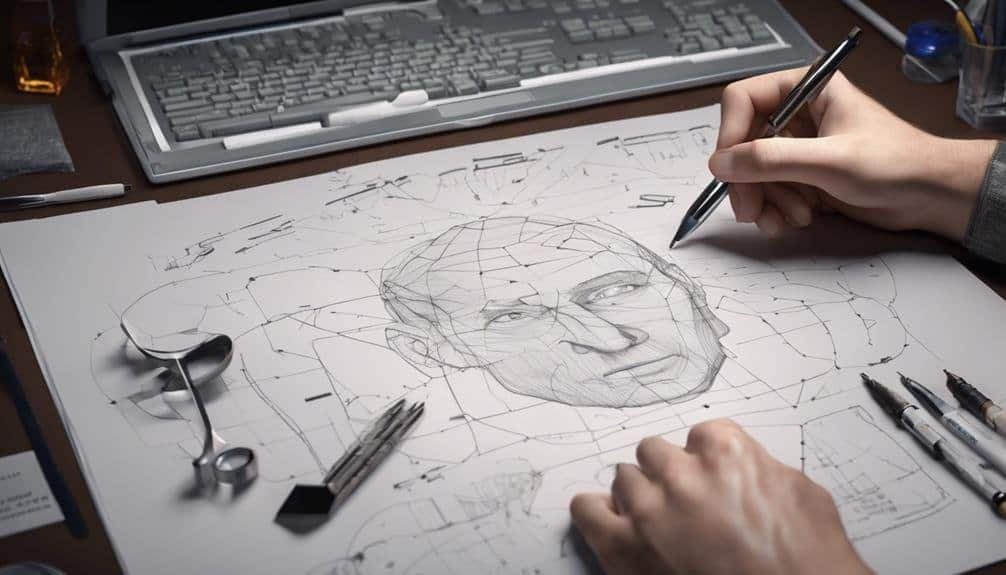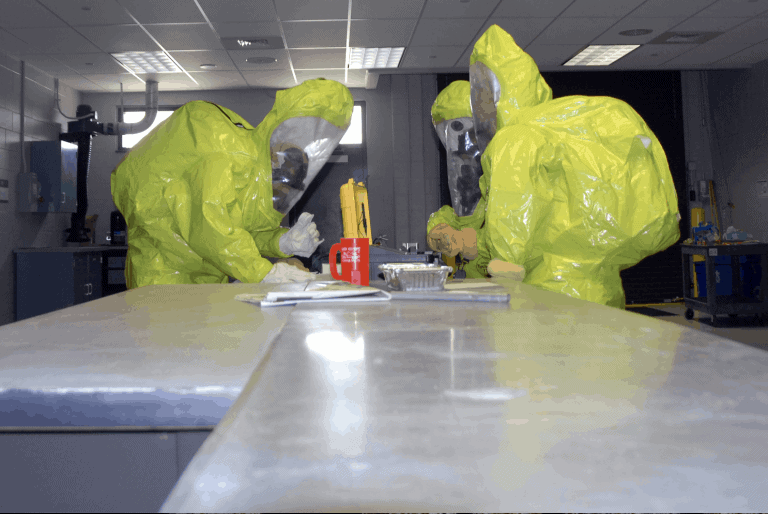Critical Observation as a Soft Skill
Enhancing your crucial observation skills is essential for honing decision-making and gaining deeper insights. By analyzing intricate issues, refining attention to detail, and challenging assumptions, you cultivate a well-rounded approach to problem-solving. Noting subtle nuances and linking seemingly unrelated events can lead to innovative solutions. Critical observation is not just a skill; it is a gateway to grasping different perspectives and driving informed decisions. This skill elevates your professional toolkit, offering a valuable asset in maneuvering complexities and fostering growth. Embrace the power of critical observation to improve your abilities and discover new opportunities.
Key Takeaways
- Critical observation as a soft skill enhances decision-making abilities.
- It aids in interpreting surroundings and picking up subtle cues.
- Observational skills support innovation and creative problem-solving.
- Active engagement in visual perception leads to informed judgments.
- Heightened awareness of visual stimuli improves overall perception.
The Importance of Critical Observation
Understanding the significance of critical observation in daily interactions can greatly enhance your decision-making skills and overall perception of the world around you. Visual perception plays an important role in how we interpret and navigate our surroundings. By actively engaging in visual observation, you can pick up on subtle cues, body language, and environmental factors that influence your interactions with others. This heightened awareness of visual stimuli allows you to make more informed judgments and respond effectively in various situations.
Moreover, cognitive awareness is another key aspect of critical observation. Being cognitively aware means being attuned to the mental processes involved in perception, memory, and problem-solving. By sharpening your cognitive awareness through observation, you can improve your ability to analyze situations, identify patterns, and make connections between different pieces of information. This mental agility not only enhances your decision-making skills but also deepens your understanding of complex issues. In essence, critical observation cultivates a more nuanced and insightful perspective on the world around you.
Enhancing Analytical Skills
To enhance your analytical skills, practice dissecting complex problems into manageable components for a clearer understanding and effective problem-solving. When faced with a challenging task, break it down into smaller, more digestible parts. Utilize problem-solving strategies such as root cause analysis or the SWOT (Strengths, Weaknesses, Opportunities, Threats) framework to systematically address each aspect. Analytical techniques like brainstorming, mind mapping, or decision trees can also aid in organizing information and identifying patterns.
Furthermore, honing your analytical skills involves developing the ability to think critically and logically. Evaluate different perspectives, consider various potential outcomes, and weigh the pros and cons of each alternative. By enhancing your analytical skills, you can make informed decisions based on evidence and sound reasoning.
Developing Attention to Detail
When honing your attention to detail, it's vital to pay close attention to subtle nuances that may often go unnoticed.
By focusing on enhancing your precision skills, you can elevate the quality of your work greatly.
Noticing Small Nuances
Noticing the subtle nuances in your environment can greatly enhance your ability to develop a keen attention to detail. This skill involves a micro level analysis, where you pay attention to subtle cues that others might overlook. By honing your fine-tuned perception, you start uncovering hidden patterns that provide valuable insights.
- Micro Level Analysis: Engage in scrutinizing details that others might miss, leading to a deeper understanding.
- Fine-Tuned Perception: Train your mind to detect even the faintest of hints, allowing you to see beyond the obvious.
- Hidden Patterns: Uncover the interconnectedness of seemingly unrelated elements, providing a holistic view of situations.
Enhancing Precision Skills
Sharpen your focus on the minutiae of tasks and situations to cultivate a sharper eye for detail. By honing your focus skills and sharpening perception abilities, you can greatly enhance your precision skills. Improving visual acuity and refining cognitive processes are essential aspects of developing attention to detail.
Paying attention to small details not only demonstrates your dedication but also guarantees accuracy and quality in your work. Practice actively observing your surroundings, tasks, and interactions with others. Take the time to notice patterns, inconsistencies, and subtle changes. Engaging with information at a deeper level helps you become more meticulous and thorough in your approach.
Embrace challenges that require precision, as they provide opportunities to refine your attention to detail further.
Questioning Assumptions Effectively
To effectively question assumptions, one must probe beneath the surface and challenge ingrained beliefs with a critical eye. Challenging assumptions is an essential skill that can lead to improved judgment and decision-making.
Here are three key strategies for questioning assumptions effectively:
- Seeking Diverse Perspectives: By considering a wide range of viewpoints, you can uncover biases and blind spots that may have influenced your assumptions. Engaging with people who've different backgrounds or experiences can offer valuable insights and help you question your own beliefs.
- Testing Assumptions Through Inquiry: Instead of accepting assumptions at face value, ask probing questions to understand the reasoning behind them. By digging deeper and examining the evidence supporting these assumptions, you can evaluate their validity and identify any flaws in logic.
- Embracing Curiosity and Openness: Approach assumptions with a curious mindset and remain open to new information. Cultivating a willingness to challenge your own beliefs and explore alternative perspectives can lead to more nuanced thinking and better decision-making.
Drawing Meaningful Insights
For drawing meaningful insights, engaging in reflective analysis is crucial to extract valuable lessons from experiences and information.
Interpretive analysis allows you to dig deeper into the layers of data or situations, enabling you to uncover hidden meanings and understand underlying motives.
Through deep reflection, you can connect the dots between seemingly unrelated events or pieces of information, leading to a more thorough understanding of the subject at hand.
This process of introspection and analysis helps in recognizing patterns that mightn't be immediately apparent, facilitating insightful connections that can shape your perspective and decision-making.
Application in Decision Making
When making decisions, considering various perspectives and analyzing situations critically can lead to enhanced problem-solving skills.
By applying your ability to observe, evaluate, and interpret information effectively, you can make informed decisions that align with your goals and values.
This skill not only sharpens your decision-making process but also fosters a deeper understanding of complex situations.
Analyzing Various Perspectives
Through the lens of critical observation as a soft skill, maneuvering the complexities of decision-making involves scrutinizing various perspectives with a discerning eye. When faced with choices, consider the following:
- Multiple Viewpoints: Acknowledge the existence of diverse interpretations on the matter at hand. Each perspective offers unique insights that can enrich your understanding.
- Analyzing Biases: Be mindful of biases that may influence your decision-making process. Recognize these biases to guarantee a more objective evaluation of the situation.
- Recognizing Patterns: Look for recurring themes or trends across different perspectives. Identifying patterns can help you uncover underlying issues and make more informed decisions.
Embracing these practices will empower you to navigate decision-making with clarity and depth.
Enhancing Problem-Solving Skills
To enhance problem-solving skills effectively in decision-making, you must explore the intricacies of analyzing scenarios with a critical eye. Active listening is key in understanding all facets of a problem, allowing you to investigate deeply into its roots.
By actively listening to others' perspectives, you can identify various angles that contribute to the issue at hand. Creative thinking plays an essential role in generating innovative solutions that may not be immediately apparent.
When faced with a decision-making process, the ability to identify the core problem accurately is vital. This skill enables you to focus your efforts on addressing the root cause rather than just surface-level symptoms.
Through thoughtful problem identification and solution generation, you can navigate complex situations with confidence and clarity.
Critical Observation for Innovation
Engaging in critical observation is essential for fostering innovation within any organization. By honing your observation skills, you can uncover opportunities for growth and development that may have otherwise gone unnoticed. Here's how critical observation can drive innovation:
- Creative Problem Solving: Through keen observation, you can identify gaps or inefficiencies in current processes, sparking creative solutions to address them.
- Innovative Thinking: Observing how things are done can inspire new ways of approaching tasks or challenges, leading to innovative ideas that push the boundaries of what's possible.
- Critical Thinking and Strategic Analysis: By critically observing the market, competitors, and internal operations, you can make informed decisions that drive strategic innovation initiatives.
Conclusion
To wrap up, critical observation is like a painter meticulously adding layers of detail to a canvas, creating a masterpiece of understanding and insight.
By honing this soft skill, you can enhance your analytical abilities, develop a keen attention to detail, question assumptions effectively, draw meaningful insights, and make informed decisions.
Embrace the power of critical observation to drive innovation and success in your personal and professional endeavors.








